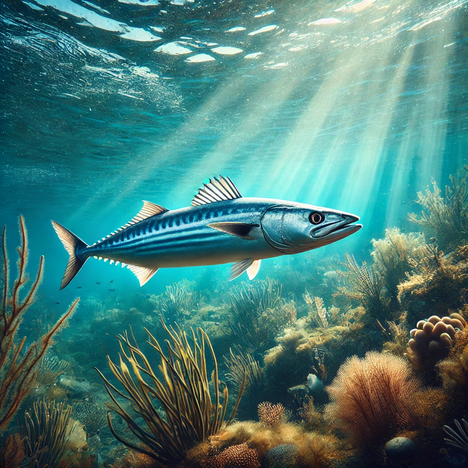Hake

What are hake?
Hake belong to a family of fish species found in the colder waters of the Atlantic and Pacific Oceans. They are known for their elongated body and firm, white flesh, which makes them a popular choice for human consumption. However, their nutritional profiles also make them a potentially interesting option for dogs' diets.
Benefits of hake in dog nutrition
Rich in protein
Hake are an excellent source of protein, which is essential for muscle growth and maintenance in dogs. Protein also contributes to energy supply and supports the immune system.
Omega-3 fatty acids
These fish are rich in omega-3 fatty acids, which provide numerous health benefits for dogs, including promoting a healthy coat, supporting cognitive function and relieving inflammation.
Vitamins and minerals
Hake contains important vitamins and minerals that contribute to a dog's overall health. These include vitamin B12, phosphorus and selenium, which each play a role in supporting the nervous system, bone health and antioxidant defense.
Disadvantages and precautions
Heavy metal exposure
Like many marine fish, hake can contain heavy metals such as mercury, which can be harmful to dogs (and humans) in high amounts. It is important to moderate the amount of fish fed and, where possible, choose sources that have been tested for low levels of heavy metals.
Allergy risk
Some dogs may be allergic to fish protein. Watch your dog closely for signs of allergy, such as itching, skin redness or gastrointestinal discomfort, especially when introducing hake for the first time.
Preparation
Proper preparation is crucial to minimize potential health risks. Hake should always be cooked and never fed raw to dogs to avoid the risk of parasites and bacteria. It is also important to carefully remove all bones, as these can pose a choking hazard or injure the digestive tract.
Incorporating hake into your dog's diet can be a nutritious addition that is both tasty and healthy. However, as with any new food element, it is essential to proceed with caution. The benefits of hake, such as high protein content and omega-3 fatty acids, can contribute to your dog's health and well-being. At the same time, it is essential to keep an eye on possible risks such as heavy metal exposure and allergies. A balanced diet, created with your dog's individual needs and health in mind, remains the key to a long and happy life by your side.
If you notice any signs of hypersensitivity or poisoning in your dog, you should see your vet immediately. We are not a substitute for a vet, but we try to be as accurate as possible. Every dog reacts differently and we recommend you get a second opinion or consult your vet if in doubt.
Stay healthy and take good care of your four-legged friend!😊